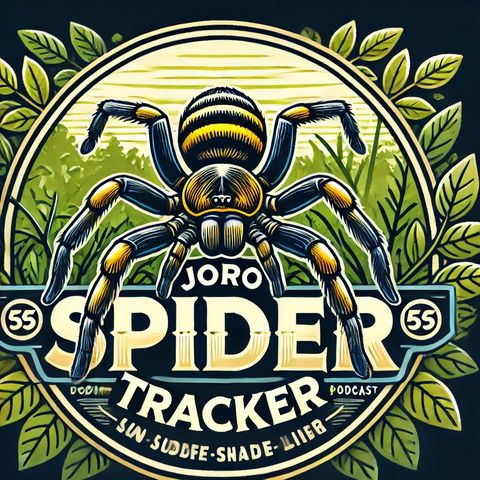Captivating Joro Spider: From East Asia to the Southeastern US

Iscriviti gratuitamente
Ascolta questo episodio e molti altri. Goditi i migliori podcast su Spreaker!
Scarica e ascolta ovunque
Scarica i tuoi episodi preferiti e goditi l'ascolto, ovunque tu sia! Iscriviti o accedi ora per ascoltare offline.
Captivating Joro Spider: From East Asia to the Southeastern US
Questa è una trascrizione generata automaticamente. Si prega di notare che non è garantita la completa accuratezza.
Descrizione
The Joro spider, scientifically known as Trichonephila clavata, is an eye-catching species originally from East Asia, predominantly found in Japan, Korea, Taiwan, and China. This spider belongs to the orb-weaver...
mostra di piùPhysically, the Joro spider is quite distinctive with females showcasing a bright yellow, blue, and red coloration on their bodies, which can span up to three inches when including their leg span. Males are significantly smaller and less colorful, which is typical for many spider species. The size and vivid coloring of the female Joro spider not only play a role in mating but also serve as a deterrent to predators by signaling their potentially toxic nature.
The Joro spider's web is equally impressive, often spanning several feet in width. The strength and extensiveness of its web are believed to assist its survival and proliferation, especially in non-native environments. The silk of the Joro spider has been subject to scientific studies due to its robustness, which is comparable to that of the silk produced by the golden silk orb-weaver.
Introduced accidentally into the United States, specifically in Georgia around 2014, possibly through shipping containers, the Joro spider has adapted well to the climates of the southeastern US. Their resilience and ability to survive colder temperatures compared to other spiders have allowed them to expand their territory rapidly. This adaptability sparks some ecological concerns; however, as of now, studies suggest that the Joro spider doesn’t pose a significant threat to local ecosystems nor to humans. In contrast, these spiders can contribute positively by helping control pest populations, as they prey on various insects including some harmful agricultural pests.
Despite their invasive status, there's no evidence that Joro spiders displace or outcompete native spider species. Their presence in new environments is closely monitored by biologists and ecologists to ensure that they do not disrupt local biodiversity. Furthermore, their striking appearance and fascinating web structures make them a subject of interest not only for scientific research but also for photography and nature observation.
Understanding the dynamics of species like the Joro spider in non-native regions is essential to assessing their ecological impact and exploring potential benefits and challenges of their presence. Their story is a reminder of the complexities of biological invasions and the unforeseen consequences of global trade and travel.
Informazioni
| Autore | QP-4 |
| Organizzazione | William Corbin |
| Sito | - |
| Tag |
Copyright 2024 - Spreaker Inc. an iHeartMedia Company
